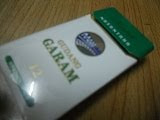Hello……
Today, we all study about nuclear fuel cycle…..
You all know about Uranium??? Ok…Before I go further let me explain definition of the Uranium…
Uranium is a very dense, radioactive metallic element, naturally occurring in most rocks, soil, and even in the ocean.
Uranium, a radioactive element, has existed since our planet was born.
238U – 99.29% and half life, λ= 4.47 x 109years
235U - 0.711 % and half life, λ= 7.04 x 108years
234U - 0.005 %
Its most stable isotope, Uranium 238 (92 protons + 146 neutrons), has a half-life of about4.5 billion years, or the age of the Earth.
Global Nuclear Power
Now in global, we have 436 commercial nuclear power reactors (+ 28 under construction). However 30 countries have their own nuclear power. Nowadays, 16% of world electricity supplied by nuclear as base-load. The total worl power capacity is 370000 MWe. To improve this nuclear power, 56 countries operate a total of 284 research reactors and a further 220 reactors power ships and submarines.
Uranium Requirements
•Principal demand is for nuclear fuel.
•Current Demand:
~ 441 reactors worldwide
Total output ~ 376,000 MWe
Each requires ~ 170 tonnes UOC per year
UOC requirement ~ 70,000 tonnes per year
•Current Production (2009):
Current UOC output = 50,772 tonnes per year
Nuclear Properties of Uranium
•U isotopes all alpha emitters.
•Some spontaneous fission (SF).
•Specific activity of U low due to long half-lives, but they can decay through chain of
daughter products, ultimately leading to lead or bismuth.
•At secular equilibrium, all decay rates are same throughout the chain. Daughter product
concentration in proportion to half-life. More or less, 95% of specific activity (Bq/kg) is
due to daughter products.







5 comments:
Hello,
Yes it was good to know about the cycle. We can clearly see a pattern, where in the future, Uranium is the new fossil fuel. However my worry is about the waste storage and disposal. If the most stable uranium has a half life of 4.5 billion years, then when it is stored, isnt it dangerous>? As it will still be very radioactive after being used, because of its long half life, which makes it practically 'un-decay-able'..Thanks
JASON FRANCIS
jason_spyboy@yahoo.com
Hey there. As what i know, nuclear fuel is a material that can be consumed to derive nuclear energy, or in other words, chemical fuel that is burned for energy. I would like to know which uranium mining is the most preferable one. Underground, In Situ, or Open Cut? I am sure there will be alot of radioactive activities going on during the mining, so how do they do it?
Maybe in the next post you can explain more about the conversion, enrichment, fuel fabrication and how they manage the waste.
Thank You.
LIM CHEE KEONG (ME 083567)
eric9090@hotmail.com
hi....
i'm just curious to know that how is the uranium retrived from the earth as in what kinds of tols are used ?
DARSHAN A/L NAMASIVAYAM
ME 083535
darshan.bigd@hotmail.com
hey there...
as jason said the only concern about nuclear energy generation is its waste products which are highly radioactive to a certain extent but i've read from the internet that there are many methods in the radioactive waste management like vitrification in borosilicate matrix which is currently done in india....so oby the looks of it nuclear does more good than harm.
DARSHAN A/L NAMASIVAYAM
ME 083535
darshan.bigd@hotmail.com
Post a Comment